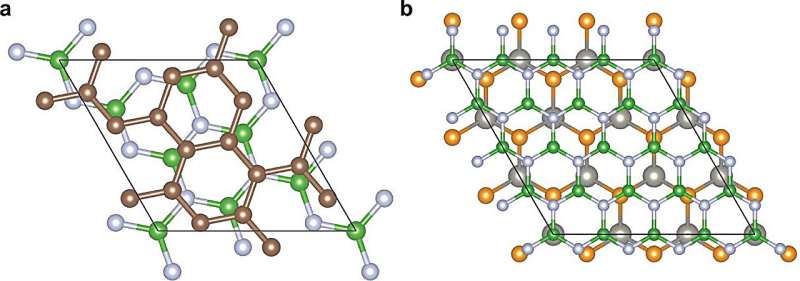This article has been reviewed according to Science X's editorial process and policies. Editors have highlighted the following attributes while ensuring the content's credibility:
fact-checked
peer-reviewed publication
trusted source
proofread
Atomically thin transducers could one day enable quantum computing at room temperature

Quantum computers have to be kept cold to function—very cold. These machines generally run at "just a few degrees above absolute zero," says Yoseob Yoon, assistant professor of mechanical and industrial engineering at Northeastern University. "It's colder than outer space."
Yoon's research focuses on "controlling material properties using lasers," he says.
In other words, he shoots light at atomically thin materials to get them moving in novel ways.
One of his principal materials is something called graphene, a two-dimensional surface whose discoverers received the Nobel Prize in Physics in 2010, Yoon says.
Yoon produces graphene through what he calls the Scotch Tape method. "I have a few millimeter-wide and -thick bulk materials of, for example, graphite," he says, the same carbon derivative found in pencils. "I basically use Scotch Tape—literally—and then I peel off" ultra-thin samples from the bulk material.
These samples are the thickness of a single atom, "without any roughness," he says.
There already existed a field studying "thermal transport using thin metallic films," Yoon says. By firing lasers at very thin metals, researchers can induce controlled oscillations like acoustic waves in drums.
However, "this has been limited to gigahertz regimes, because these metals are very heavy, and they cannot be controlled down to monolayer thickness.
"And then there is another field, basically a 2D-material field," he continues. "They exfoliate these atomically thin layers."
Yoon's breakthrough came in combining these two fields. By aligning atomically thin structures with the study of laser-based thermal transport, "there's a new regime that we couldn't achieve before."
Now, in a paper published in Nature, Yoon and his collaborators have identified novel van der Waals heterostructures (created by combining layers of these atomically thin materials, including graphene and other varieties) that allow control at terahertz frequencies.
Here's what that means. Yoon notes that "temperature" is really just molecules in motion. The faster the molecules move, the higher the temperature. In a quantum computer, this motion translates to random noise, inhibiting the computer's function. Supercooling a quantum computer, therefore, increases efficiency.
Current transistors in quantum computers are limited to the gigahertz range. "That limits the range of temperatures that can be operated," Yoon says. "They can operate only at low temperatures." Colder than outer space, remember.
"Because of this frequency limit," he continues, increasing the range of these transistors into terahertz frequencies—an increase by a factor of a thousand—"we will be able to run [quantum computers] at room temperatures."
In other words, a machine that runs close to negative 460 degrees Fahrenheit can suddenly be run at room temperature.
At least this particular component, Yoon is quick to point out. "There are some disadvantages of going to higher temperatures, [for instance,] quantum signals will decay much faster."
So this isn't the ultimate solution in room temperature quantum computing, but it is one major step toward that goal.
What comes next? "We've pushed in terms of frequency bandwidth, and how high the frequency can be," he says. "But we didn't push to the amplitude limits."
"We want to push the limit."
More information: Yoseob Yoon et al, Terahertz phonon engineering with van der Waals heterostructures, Nature (2024). DOI: 10.1038/s41586-024-07604-9
Journal information: Nature
Provided by Northeastern University
This story is republished courtesy of Northeastern Global News news.northeastern.edu.





















